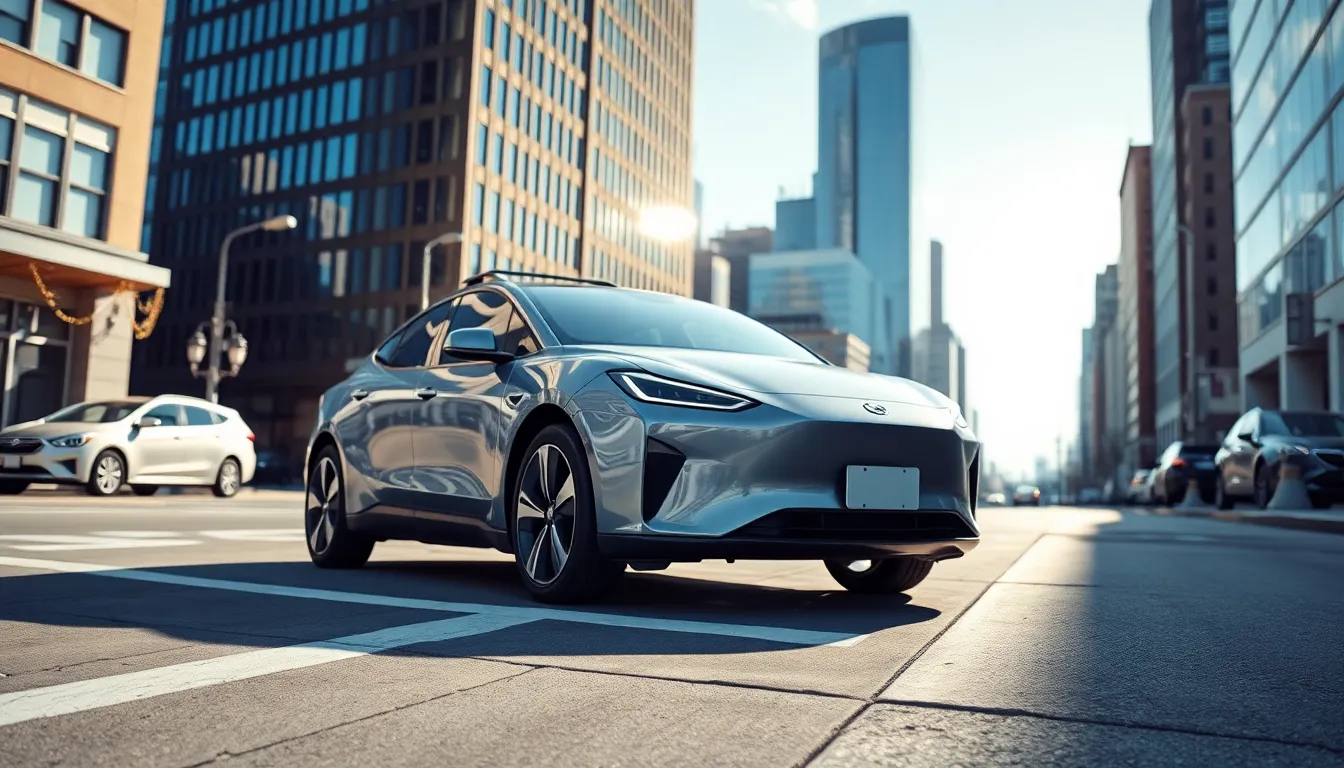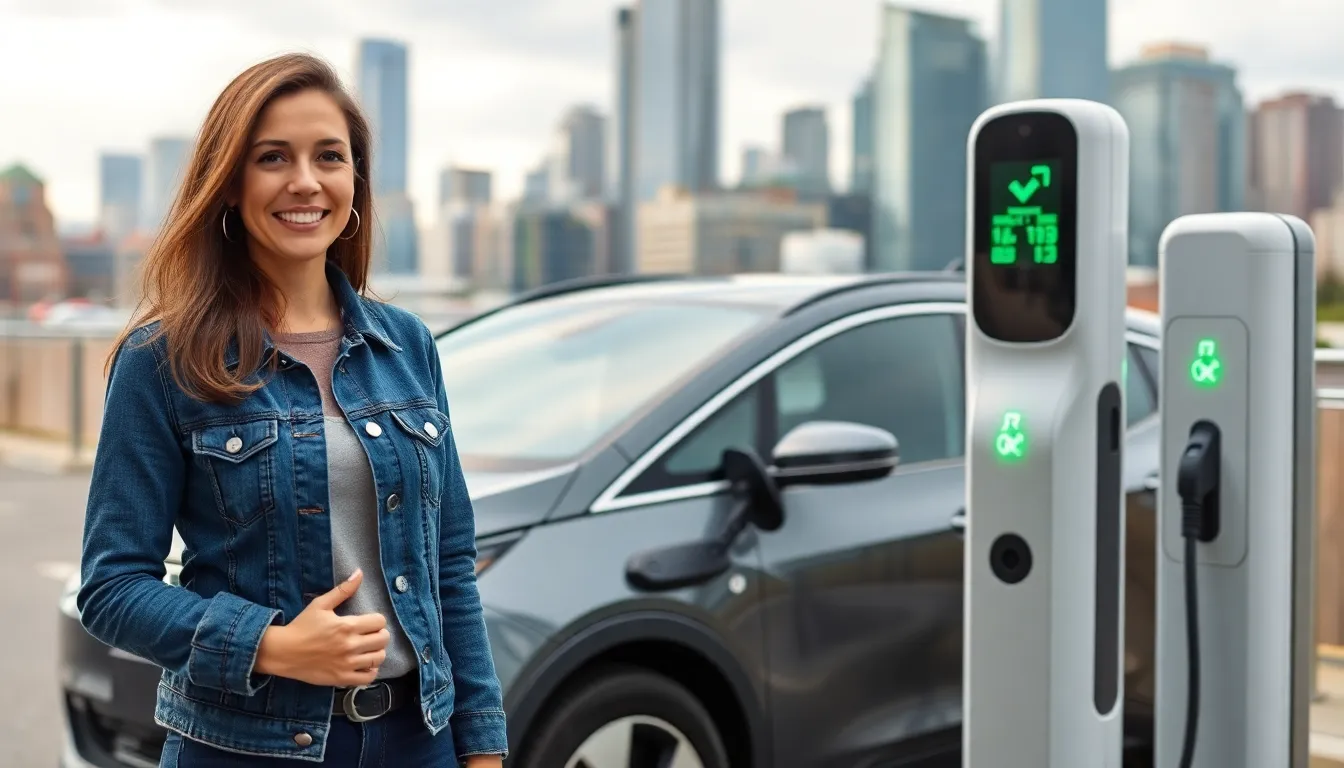The electric vehicle (EV) market is rapidly transforming the automotive landscape, driven by technological advancements and growing environmental awareness. As more consumers embrace sustainable transportation options, the competition among manufacturers intensifies, leading to a dynamic shift in market share.
Understanding the current trends in EV market share is crucial for industry stakeholders, investors, and consumers alike. With major players like Tesla, Ford, and emerging brands vying for dominance, the landscape is evolving at an unprecedented pace. This article explores the factors influencing market share, highlights key players, and examines the future trajectory of electric vehicles in a world increasingly focused on sustainability.
Table of Contents
ToggleOverview of EV Market Share
The electric vehicle (EV) market continues to experience significant growth globally. In 2022, EV sales reached approximately 10 million units, capturing about 14% of the total automotive market share. Factors driving this expansion include government incentives, advancements in battery technology, and a growing commitment to sustainability.
Regional differences illustrate varying adoption rates. In 2022, Europe held the largest share of the EV market at 23%, followed closely by China with 17%. The United States accounted for 6% of global EV sales, indicating room for growth. Leading manufacturers like Tesla dominated the U.S. market, holding around 65% of the share, while companies such as Ford and General Motors are progressively increasing their presence.
Market dynamics are influenced by consumer preference for sustainability and innovation. Data reveals that over 70% of potential buyers cite environmental concerns as a primary reason for considering an EV. Moreover, charging infrastructure development positively impacts market penetration, with over 150,000 publicly accessible charging stations in the U.S. alone.
Projected trends suggest that the global EV market may surpass 30% market share by 2030, driven by stricter emissions regulations and advancements in autonomous driving technology. The influx of new competitors alongside established brands intensifies the competitive landscape, prompting continual enhancements in vehicle design and performance.
Stakeholders should monitor these trends closely, as the EV market evolves rapidly to meet changing consumer preferences and regulatory frameworks.
Factors Influencing EV Market Share

Several factors shape the electric vehicle (EV) market share, impacting both the growth and acceptance of EVs across various regions. Understanding these elements provides insight into the future trajectory of the automotive industry.
Government Policies
Government policies play a crucial role in influencing EV market share. Incentives such as tax credits and rebates encourage consumers to purchase EVs. As of 2022, the U.S. offered federal tax credits up to $7,500 for eligible electric vehicles. Additionally, numerous states have implemented their own incentives, further reducing costs for consumers. Stricter emissions regulations also push automakers towards electrification, with the European Union targeting a 55% reduction in carbon emissions from new cars by 2030. This regulatory environment drives investments in EV technology and encourages manufacturers to innovate towards sustainable solutions.
Consumer Preferences
Consumer preferences greatly affect EV market dynamics. Over 70% of potential buyers cite environmental concerns as a primary reason for considering an electric vehicle. The shift towards sustainability influences purchasing decisions, leading to increased demand for eco-friendly options in the market. Features such as advanced technology, longer battery ranges, and improved performance also attract buyers. As of 2023, 63% of consumers indicated a preference for brands that invest in sustainable practices, reinforcing the trend towards electric vehicles. Emerging data highlights the importance of addressing consumer preferences to enhance EV adoption significantly.
Regional Analysis of EV Market Share
The electric vehicle (EV) market exhibits diverse growth patterns across different regions, influenced by varying government policies, consumer preferences, and market conditions. This analysis highlights the distinct characteristics and trends shaping the EV landscape in North America, Europe, and Asia-Pacific.
North America
In North America, the EV market demonstrates significant development, fueled by strong consumer interest and supportive state policies. The U.S. EV market share stood at 6% in 2022, primarily driven by Tesla’s prominence, which holds approximately 65% of that share. Other manufacturers, including Ford and General Motors, are working to close the gap with new electric offerings. Incentives such as the federal tax credit of up to $7,500 encourage purchases, while over 150,000 public charging stations enhance accessibility. With increased investments in EV infrastructure and technology, North America’s market may see continual growth in the coming years.
Europe
Europe leads the global EV market, capturing 23% of total automotive market share. Countries like Norway and the Netherlands exhibit particularly high adoption rates, with Norway exceeding 54% of new car sales being electric in 2022. European nations benefit from robust government policies promoting EV use, including tax incentives, subsidies, and stringent emissions regulations such as the EU’s target for a 55% reduction in carbon emissions by 2030. Major automakers like Volkswagen and Renault actively invest in EV technology, further supporting regional growth. This competitive environment conducive to innovation positions Europe favorably for sustained market expansion.
Asia-Pacific
Asia-Pacific represents a dynamic region for EV growth, prominently led by China, which accounted for 17% of global market share in 2022. Local manufacturers such as BYD and NIO push boundaries, offering a variety of electric models. Government incentives promote EV adoption, including subsidies and tax exemptions, making electric vehicles more affordable. Additionally, the establishment of extensive charging networks supports infrastructure development, reinforcing consumer confidence. The region’s commitment to reducing emissions and enhancing energy efficiency creates a promising landscape for further market penetration in the coming years.
Major Players in the EV Market
The electric vehicle (EV) market features several key players shaping its landscape. Leading manufacturers and emerging brands contribute to ongoing innovations and competition.
Leading Manufacturers
Tesla remains the most prominent player in the EV market with approximately 65% market share in the U.S. This brand’s commitment to innovation and its extensive Supercharger network significantly enhances its competitive edge. Ford follows with a growing portfolio, including models like the Mustang Mach-E and F-150 Lightning. General Motors is also making strides, with plans to launch multiple electric models by 2025, setting an ambitious target for a fully electric future. Other notable manufacturers include Volkswagen, which invested heavily in its ID series, capturing attention in Europe and other global markets. BMW and Audi are also expanding their electric offerings, focusing on performance and luxury, appealing to a more specific consumer base.
Emerging Brands
Multiple emerging brands are gaining traction in the EV market. Rivian, with its all-electric R1T truck and R1S SUV, targets adventure-seeking consumers while establishing a reputation for innovation. Lucid Motors focuses on premium electric vehicles, highlighting luxury and range, with the Lucid Air boasting over 500 miles on a single charge. NIO from China stands out with its battery-swap technology, aiming to reduce charging time and enhance convenience for users. Other brands, such as BYD and Fisker, leverage unique features and competitive pricing to attract a growing base of eco-conscious consumers. These emerging companies demonstrate the evolving nature of the EV market, presenting new opportunities and challenges for established manufacturers.
Future Trends in EV Market Share
Future trends in the EV market indicate significant changes driven by technological advancements, regulatory pressures, and evolving consumer preferences. Sustainable practices remain central, with over 80% of consumers stating ecological impacts as a top concern for future vehicle purchases.
Expect battery technology improvements to enhance performance and lower costs. Next-generation batteries, such as solid-state options, promise faster charging times and longer ranges, capturing greater market interest. By 2025, battery prices are projected to decrease by 50%, making EVs more accessible to a broader audience.
Emerging markets will play a critical role in driving EV adoption. Countries in Southeast Asia and Africa show increasing interest, fueled by governmental incentives and affordable models. Projected sales in these regions could see a 20% market share by 2030, expanding the global footprint of electric vehicles.
Autonomous driving technology is advancing, influencing consumer perceptions and market engagement. As autonomous features become prevalent, it’s likely to draw in an even wider base of potential buyers. Experts anticipate that fully autonomous EVs could account for up to 15% of all EV sales by 2030.
Governments continue to implement stricter regulations on emissions, impacting traditional automotive manufacturers. By 2025, multiple countries are set to enforce bans on the sale of new internal combustion engine vehicles, accelerating the shift to electric mobility.
The charging infrastructure will expand significantly, making EVs more convenient. Analysts project that by 2030, the U.S. will have over 400,000 public charging stations. Increasing accessibility and faster charging options will alleviate range anxiety, thus enhancing consumer confidence in adopting EVs.
Regional dynamics will also evolve as markets mature. In Europe, ongoing investments in renewable energy sources will complement EV growth, while China will maintain its leadership with aggressive policies aimed at boosting local manufacturers. North America’s growth will likely be supported by rising federal incentives and enhanced infrastructure development.
Overall, the interplay between technology, regulation, and consumer attitudes will shape the future landscape of the EV market share. Stakeholders must remain agile to seize opportunities and address challenges as the sector continues to evolve.
The electric vehicle market is on a transformative path fueled by innovation and a commitment to sustainability. As consumer preferences shift towards eco-friendly options and governments implement supportive policies, the landscape continues to evolve. Major players like Tesla and emerging brands are poised to reshape market dynamics while addressing the growing demand for advanced technology and extensive charging infrastructure.
With projections indicating substantial market growth in the coming years, stakeholders must stay informed and adaptable. The interplay of technological advancements, regulatory pressures, and consumer attitudes will ultimately define the future of the EV market. Embracing these changes will be crucial for manufacturers and investors aiming to thrive in this rapidly expanding sector.



